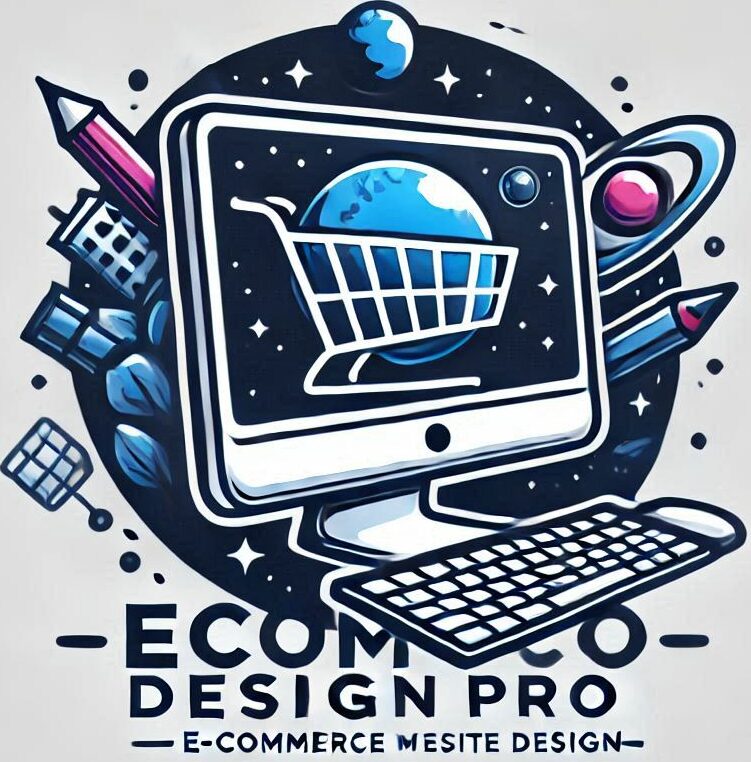In 2025, visuals are the deciding factor in e-commerce success. Shoppers expect dynamic, engaging experiences every time they visit an online store.
The right e commerce website images can build trust, boost engagement, and drive higher conversion rates. Brands that master their visual strategy stand out and win customer loyalty.
This post reveals the 10 must-have image types for every modern e-commerce site. Discover how each image impacts your results and get practical tips to implement them for maximum impact.
Ready to transform your store with images that deliver real results? Let’s get started.
Why Images Are Crucial for E-Commerce Success in 2025
In 2025, the digital marketplace is more visually driven than ever. Shoppers are bombarded with choices, so the quality and type of e commerce website images can make or break a sale. As competition intensifies, visuals are no longer just decorative—they are essential tools for capturing attention and influencing decisions.

The Shifting Impact of Visual Content
Visuals are now the primary language of online shopping. Studies show that 75% of online shoppers rely on product photos when making purchase decisions. The right e commerce website images can double engagement and keep visitors browsing longer. Brands investing in image quality and diversity consistently report higher conversion rates and lower return rates.
Evolving Customer Expectations for Imagery
Modern consumers expect more than standard product shots. They want high-resolution, authentic, and relatable e commerce website images that reflect real-world use. Shoppers are drawn to diversity in models, environments, and scenarios, seeking images that mirror their own lifestyles and values. Meeting these expectations is key to building emotional connection and brand loyalty.
Building Trust and Credibility Through Images
Images are the foundation of trust in online retail. Clear visual details help buyers evaluate quality and authenticity. According to The Power of Product Visuals in Online Shopping, high-quality e commerce website images can lead to a 94% higher conversion rate compared to low-quality visuals. Displaying badges, certifications, and user-generated content further reinforces credibility and transparency.
Mobile-First and SEO Optimized Visuals
With mobile commerce dominating, responsive and fast-loading e commerce website images are essential. Optimized images improve site speed, reduce bounce rates, and enhance user experience. Adding descriptive alt text and structured data not only aids accessibility but also boosts search engine rankings, making products easier to find and trust.
Future Trends: AI, AR, and Beyond
Emerging technologies are redefining what shoppers expect from e commerce website images. AI-driven personalization delivers tailored visuals, while AR enables customers to visualize products in their own spaces before buying. Brands adopting these innovations are seeing increased engagement and fewer returns. Staying ahead means continually adapting image strategies to match evolving trends and consumer behaviors.
10 Must-Have E Commerce Website Images for 2025
Visual content is the heartbeat of modern online shopping. As digital storefronts evolve, the types of e commerce website images you showcase will define your brand’s credibility, customer trust, and conversion rates. In 2025, shoppers expect more than just static product shots. They want immersive, informative, and authentic visuals that help them make confident purchase decisions.
Below are the 10 essential e commerce website images your site must feature to stay ahead this year. Each image type boosts engagement in unique ways, and actionable tips are included for seamless implementation.

1. High-Resolution Product Photos
High-resolution product photos are the cornerstone of effective e commerce website images. Crisp, clear visuals are non-negotiable for product pages, as they allow customers to examine details and build trust in your offerings.
Best practices for these images include using natural lighting, uncluttered backgrounds, and consistent sizing. Consistency across your catalog ensures a polished, professional look. Integrating zoom features and 360-degree views can further increase buyer confidence and reduce product returns.
For example, electronics retailers have seen significant drops in return rates after upgrading to detailed, high-res product shots. These images must look sharp on both mobile and desktop layouts, adapting seamlessly to different screen sizes.
SEO is also crucial. Use descriptive alt text and logical file names to help search engines index your e commerce website images. For an in-depth guide, see these high-quality product photography tips.
Common pitfalls include using low-resolution files or busy backgrounds, which can undermine your brand’s professionalism. Prioritize clarity, uniformity, and optimization for the best results.
2. Lifestyle Images in Real-World Contexts
Lifestyle images place your products in real-world scenarios, making e commerce website images more relatable and emotionally engaging. By showing products in use, you help customers envision how items fit into their lives.
This approach increases both aspirational appeal and relatability. Diversity and inclusivity are leading trends, with apparel brands now showcasing models of different backgrounds in authentic settings. Balance authenticity with strong brand storytelling to create genuine connections.
Optimizing these images for social sharing extends their reach beyond your site. Data shows that lifestyle images can boost conversion rates by up to 30 percent, making them a strategic asset.
To maximize impact, ensure your e commerce website images reflect your target audience and maintain visual consistency. Authentic lifestyle content encourages customers to imagine themselves as part of your brand story.
3. User-Generated Content (UGC) Photos
User-generated content is a powerful trust signal for any e commerce website images strategy. Authentic customer photos provide social proof and show real people enjoying your products.
Encourage customers to submit and tag their images with branded hashtags. Beauty brands, for example, have successfully leveraged UGC to build credibility and foster community. Implement moderation and quality control to maintain high visual standards.
Always secure rights and permissions for UGC before displaying it in galleries, reviews, or product pages. Regularly updating UGC keeps your e commerce website images fresh, unique, and SEO-friendly.
Integrating UGC into your visual strategy not only increases engagement but also provides a steady stream of relevant content that resonates with new visitors.
4. Interactive 360-Degree and AR Images
Immersive product visualization is transforming e commerce website images in 2025. Interactive 360-degree and augmented reality (AR) images let shoppers explore products from every angle or preview them in their own space.
These advanced visuals reduce hesitation and returns by giving customers confidence in their choices. For instance, furniture stores now use AR tools to allow buyers to virtually place products in their homes.
Implementing interactive images requires compatible technology and careful user interface design. Ensure accessibility so all users can benefit from these features. The conversion uplift from brands adopting 360-degree and AR e commerce website images is well documented, making them a valuable investment.
Keep usability top of mind, and test interactions across devices to deliver a seamless experience.
5. Infographic-Style Feature Highlight Images
Infographic-style images turn complex product information into digestible visual stories, making them a valuable addition to your e commerce website images portfolio. Use these graphics to explain features, benefits, or specifications at a glance.
Tech brands often illustrate intricate specs through infographics, helping shoppers understand key selling points quickly. When deciding between infographics and traditional photos, consider the complexity of your product.
Design tips include prioritizing clarity, reinforcing branding, and ensuring mobile readability. Use alt text and structured data to enhance SEO and accessibility for your e commerce website images.
Feature highlight images work well on product pages, landings, and category banners. Track engagement with metrics like clicks and time on page to refine your approach.
6. Trust-Building Badges and Certification Images
Trust signals are fundamental for e commerce website images. Badges such as security seals, accepted payment icons, eco-certifications, and awards reassure shoppers and can increase conversion rates.
Strategic placement is key. Display badges near checkout, on product pages, or in the footer for maximum visibility. Organic brands, for example, often showcase certification badges to validate their claims.
Design consistency is crucial. Integrate badges without cluttering your page, and update them to reflect current standards and trends for 2025. Use A/B testing to measure which trust badges most influence your customers.
A thoughtful trust badge strategy can set your e commerce website images apart and build lasting brand credibility.
7. Seasonal and Promotional Banner Images
Timely visuals create urgency and relevance, making seasonal and promotional banners an essential part of e commerce website images. Plan a calendar of seasonal imagery for holidays, events, or product launches.
Retailers often use countdown banners for flash sales, driving immediate action. Design banners with bold calls to action, clear messaging, and strong brand alignment.
Optimize banners for mobile devices, ensuring they load quickly and display correctly on all screens. Measure the ROI of your e commerce website images by tracking click-through and conversion rates.
To combat banner blindness, rotate creative assets and refresh designs regularly. A dynamic visual strategy keeps promotions engaging and impactful.
8. Behind-the-Scenes and Brand Storytelling Images
Behind-the-scenes images humanize your company and make your e commerce website images more relatable. Factory tours, team photos, and process shots build transparency and emotional connection.
Artisanal brands often share their crafting process to establish authenticity. Promote these visuals on social media for cross-channel engagement.
Aim for authenticity without overproducing content. Place behind-the-scenes images on about pages, blog posts, or featured homepage sections. These visuals foster loyalty and can lead to more repeat purchases.
Well-executed storytelling through e commerce website images strengthens your brand identity and helps build a lasting relationship with customers.
9. Comparison and Size Reference Images
Comparison and size reference images help customers visualize scale and fit, reducing uncertainty and returns. These e commerce website images are particularly effective for apparel, home goods, and tech accessories.
Clothing brands, for example, display items on models of varying sizes, or use visual guides like charts and overlays for clarity. Clear, descriptive captions ensure accessibility for all users.
Such images set accurate expectations and empower buyers to make confident decisions. Brands report fewer returns and higher satisfaction when using comparison-focused e commerce website images.
Incorporate these visuals wherever sizing or fit may be a concern for your customers.
10. Fast-Loading, Optimized Thumbnails and Previews
Performance is critical for sites with many e commerce website images. Fast-loading thumbnails and previews improve user experience, reduce bounce rates, and boost conversions.
Techniques like image compression, next-gen formats (WebP, AVIF), and lazy loading help balance quality and speed. Marketplaces have optimized thumbnails for mobile browsing, ensuring smooth navigation.
Test your image performance regularly using available tools, and monitor for layout shifts or broken visuals. Properly optimized e commerce website images also support SEO, especially with rich search result enhancements.
Prioritize both visual appeal and performance to deliver the best experience across devices.
How to Source, Create, and Optimize E Commerce Images for 2025
Selecting the right approach for sourcing e commerce website images is crucial. Brands can choose between in-house photography, hiring professional services, or leveraging high-quality stock images. In-house teams offer control and consistency, while professionals bring expertise and advanced equipment. Stock images provide quick solutions, but may lack uniqueness. Evaluate your product range, budget, and brand identity to determine the best fit.

Advancements in AI are transforming the way e commerce website images are created and enhanced. AI-powered tools can generate photorealistic visuals, upscale low-resolution shots, or automate background removal. These technologies help maintain consistency across large catalogs and speed up production. However, always review AI-generated content for accuracy and brand alignment.
Legal compliance is essential when using e commerce website images. Always secure the appropriate rights, licenses, or model releases for any photo, especially when using UGC or stock assets. Maintain a record of your permissions to avoid copyright disputes. This diligence protects your brand and builds trust with customers.
Image editing and optimization are vital for site performance and user experience. Utilize tools like Photoshop for advanced editing, or web-based solutions such as TinyPNG and Squoosh for efficient compression. To learn more about efficient optimization techniques, see Optimizing product images for faster loading. Focus on balancing visual quality with quick load times to support conversions.
SEO plays a pivotal role in maximizing the impact of e commerce website images. Use descriptive file names, incorporate structured data, and write clear, concise alt text for each image. For detailed guidance, check How to write alt text for e-commerce images. These practices boost search visibility and ensure accessibility for all users.
A scalable image management workflow keeps your e commerce website images organized and up to date. Implement a centralized storage system, set naming conventions, and establish an approval process for new assets. Automation tools can streamline version control and publishing, reducing manual errors.
Regularly monitor and update your e commerce website images to maintain relevance and performance. Analyze analytics for engagement trends, test new formats, and replace outdated visuals promptly. Proactive management ensures your site remains visually compelling and competitive in 2025.
Future Trends: What’s Next for E Commerce Website Images?
The landscape of e commerce website images is evolving rapidly, with new technologies and user expectations shaping the future of online shopping. Brands that want to stay ahead must anticipate these shifts and adapt their visual strategies accordingly.

AI-Driven Personalization and Dynamic Delivery
Artificial intelligence is revolutionizing how e commerce website images are delivered to shoppers. AI now enables retailers to show personalized product images based on browsing history, location, or even shopper mood. This creates a more relevant and engaging experience, helping users find exactly what they want faster.
Dynamic image delivery also means images can be automatically optimized for device type, screen size, and bandwidth. This ensures consistently high-quality visuals no matter how customers access your store.
The Evolution of AR, VR, and Immersive Visuals
Augmented reality and virtual reality are transforming e commerce website images from static photos into interactive experiences. Shoppers can now virtually try on apparel, preview furniture in their homes, or explore products in 3D, which builds confidence and reduces returns. According to Augmented reality in e-commerce, integrating AR can notably increase engagement and conversion rates for forward-thinking brands.
As AR and VR tools become more accessible, expect even small retailers to adopt immersive visuals as a standard part of their image strategy.
Accessibility, Sustainability, and Ethical Imagery
Accessibility is no longer optional. Future e commerce website images must be designed for all users, including those with visual impairments. This means using descriptive alt text, high-contrast visuals, and ensuring interactive images work with assistive technologies.
Sustainability and ethics are also gaining attention. Shoppers want images that reflect real people, diverse backgrounds, and responsible sourcing. Brands are moving away from generic stock photos in favor of authentic, original content that aligns with their values.
Video, Motion Graphics, and Visual Search
The future of e commerce website images will increasingly blur the lines between photos and video. Motion graphics, product demos, and short video loops offer richer storytelling and can hold attention longer than static images.
Visual search is another fast-growing trend. Shoppers can upload a photo to find similar products instantly, making image optimization even more critical. According to The Future of Visual Content in US E-Commerce, personalized and high-quality visuals will be essential for brands aiming to capture attention on emerging platforms.
Action Steps: Staying Ahead
To remain competitive, brands must continually update their approach to e commerce website images. Invest in AI, explore AR and dynamic formats, prioritize accessibility, and commit to creating authentic, ethical visuals. By embracing these trends, your e-commerce site will be ready for the future of online shopping.



